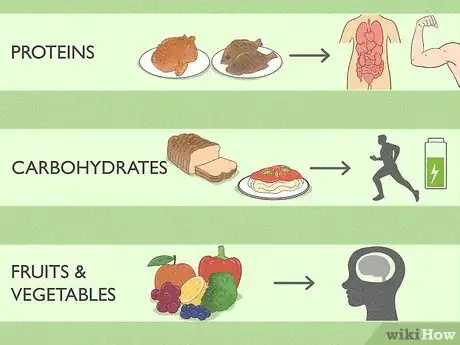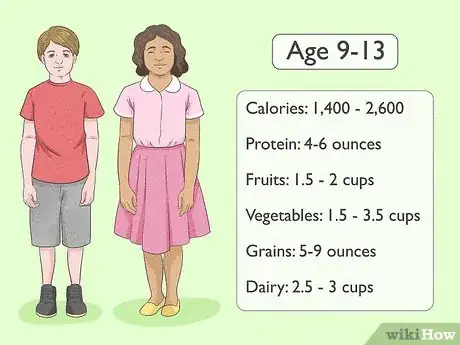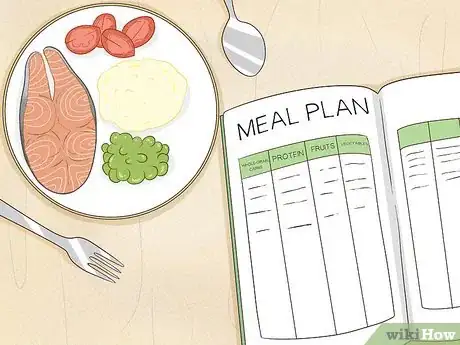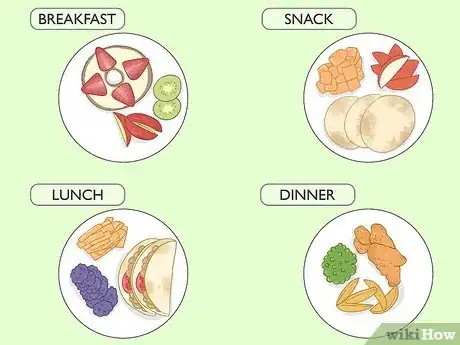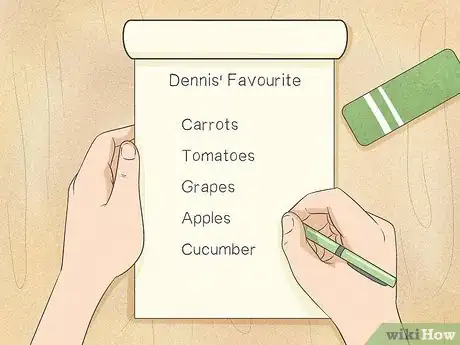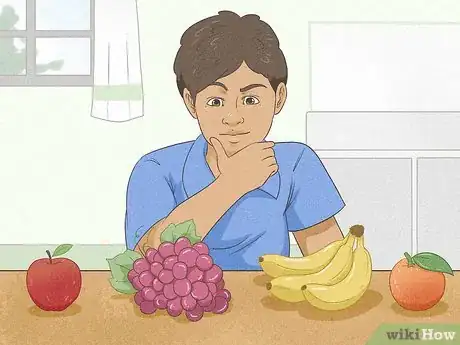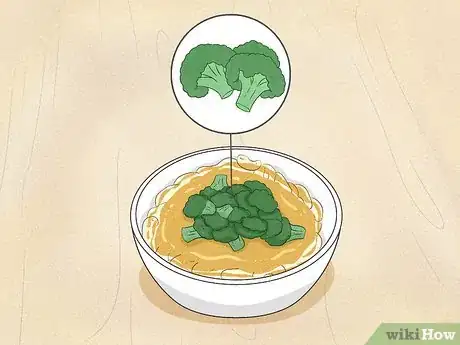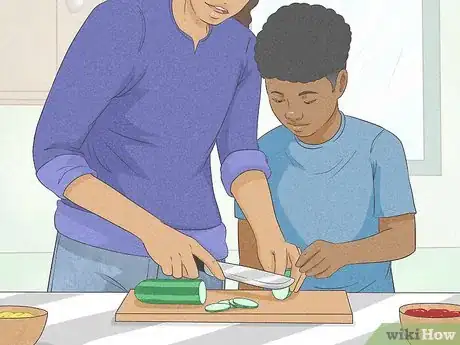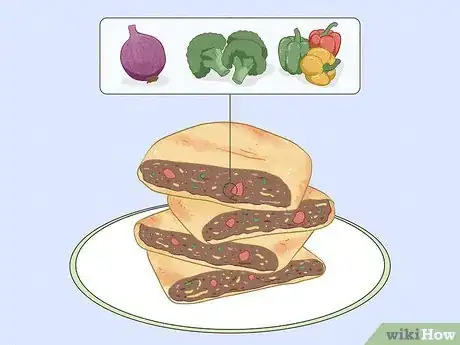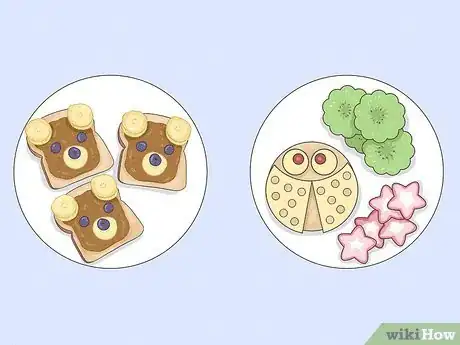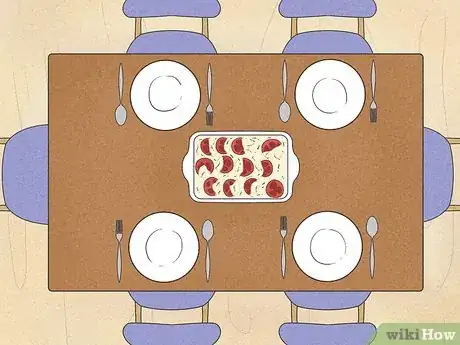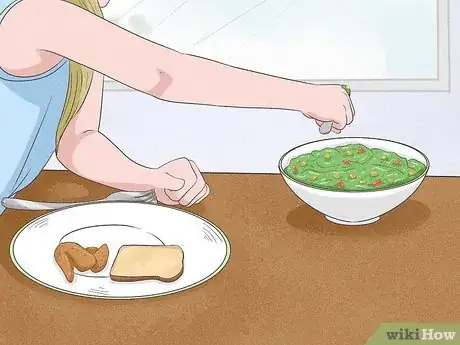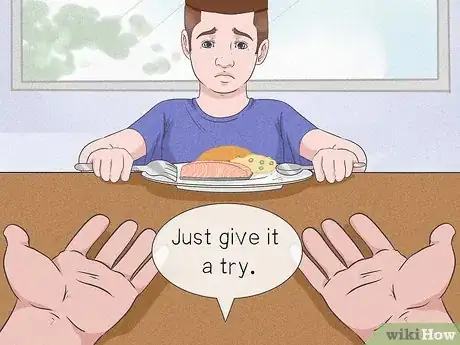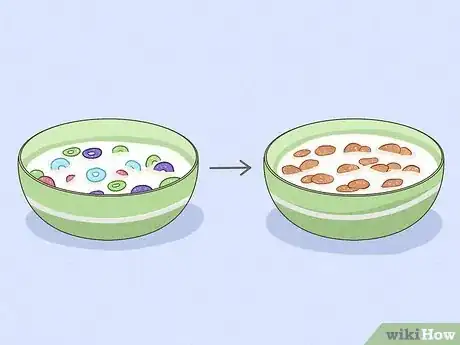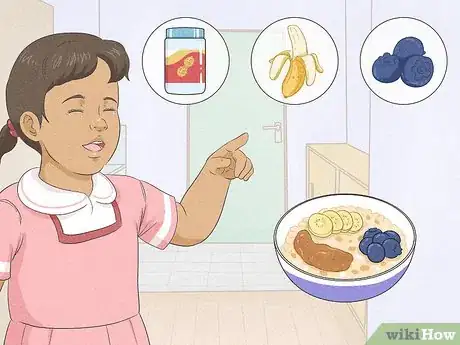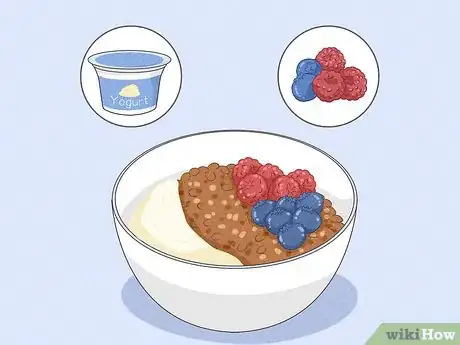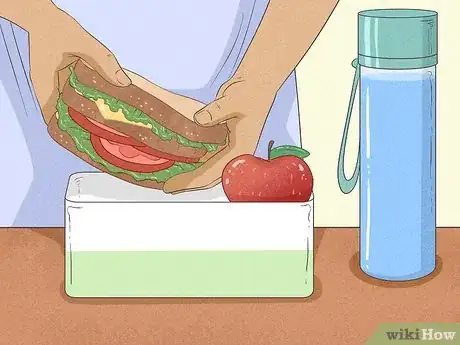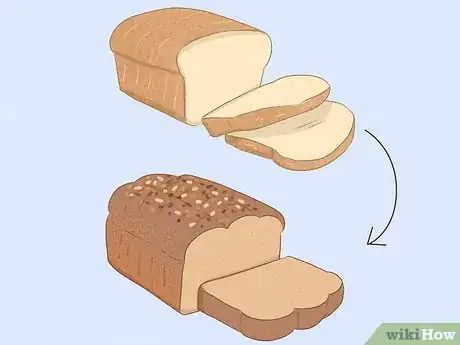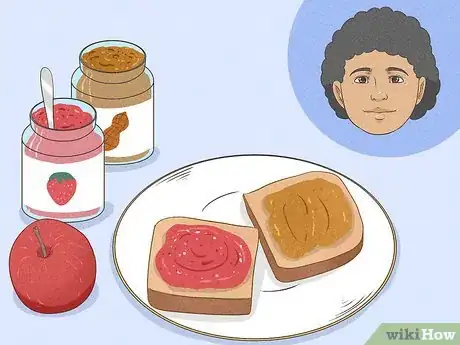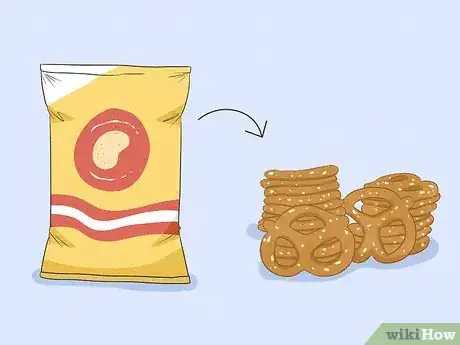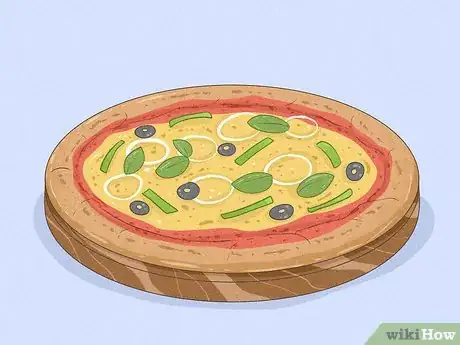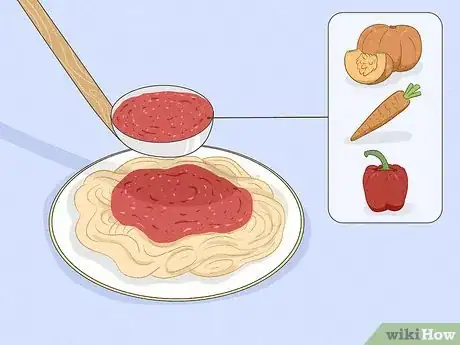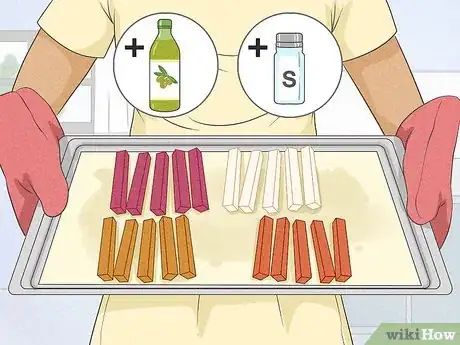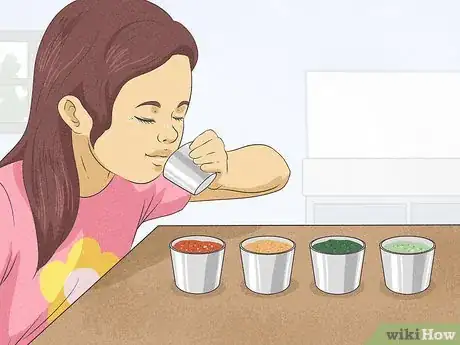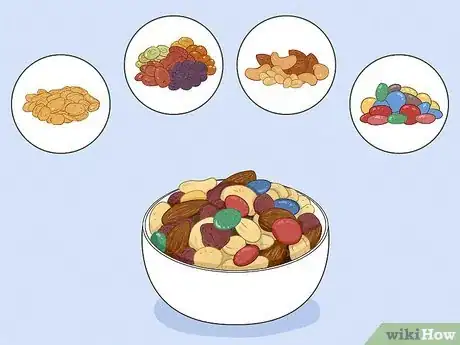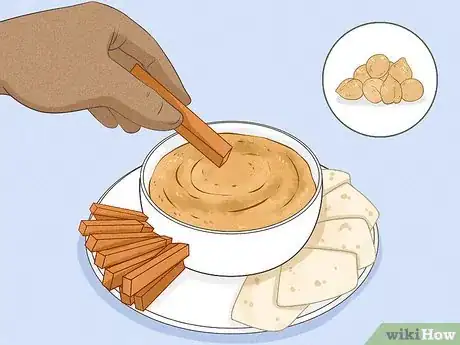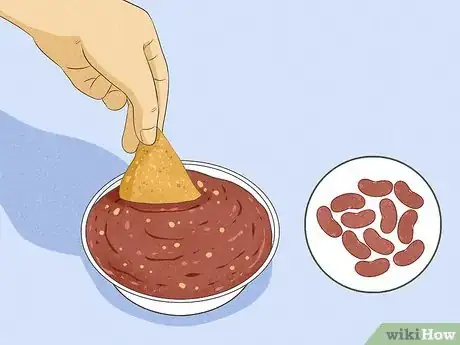This article was co-authored by Mindy Lu, LMHC, CN. Mindy Lu is a Certified Nutritionist (CN), Licensed Mental Health Counselor (LMHC), and the Clinical Director of Sunrise Nutrition, a nutrition and therapy group practice in Seattle, Washington. Mindy specializes in eating disorders, body image concerns, and chronic dieting. She holds an MS in Nutrition and Clinical Health Psychology from Bastyr University. Mindy is a Licensed Counselor and Nutritionist and is known for her warm therapeutic style and culturally-inclusive lens in healing. She is a member of the Multicultural Counselors of Washington State and the Association for Size Diversity and Health.
There are 16 references cited in this article, which can be found at the bottom of the page.
This article has been viewed 31,279 times.
Kids are notoriously picky eaters and, unfortunately, that pickiness often makes healthy food impossible to get off the plate. The eternal struggle between kid and parent to maintain a healthy diet doesn't have to be a war, however. Setting a good example, cooking healthy at home, teaching good habits, and respecting your child's opinions are all as vital to healthy eating as finding the right recipes.
Steps
Helping Kids Eat Well
-
1Explain why healthy food is important to everyone. Find ways to break down nutritional concepts so that kids can see why healthy food is so important. You'll be surprised at how quickly kids pick up on certain concepts, especially if you can relate it to their interests:
- Proteins found in chicken, fish, and beans make up your muscles and organs, and are essential for growing strong.
- Carbohydrates found in whole-grain bread, pasta, and rice provide you with the energy needed to move and be active, and whole grains have much more energy than white bread and processed (factory-made) sugars.
- Fruits and Vegetables contain vitamins and minerals that help your eyes, ears, and brain work to the best of their ability, and keep you from getting sick.[1]
-
2Know the nutritional needs of children. Depending on their age, different children will need different amounts of food. The following rough guidelines are for young children age 9-13, provided by the Mayo Clinic. Girls are on the lower end while boys are generally on the higher end of the estimates:
- Calories: 1,400 - 2,600
- Protein: 4-6 ounces
- Fruits: 1.5 - 2 cups
- Vegetables: 1.5 - 3.5 cups
- Grains: 5-9 ounces
- Dairy: 2.5 - 3 cups[2]
- These are estimates meant to help you gauge relative amounts of food. While you don't have to measure out each ounce, you do want roughly 50% more grain than protein, for example.
Advertisement -
3Learn how to plan balanced meals. A good, healthy meal for your child doesn't need to be complicated. Instead, you should aim for balance in a meal -- two or three simple dishes are perfect for a good dinner, for example. A balanced meal needs to include:
- A whole-grain carbohydrate, such as bread, pasta, or rice.
- A protein source like beans, chicken, or fish.
- A fruit or vegetable.[3]
-
4Make sure kids eat 3-4 meals a day, with snacks in between. Start the day off well with a good breakfast, and give your child healthy snacks every 1-2 hours. Hungry kids are cranky kids, and a cranky kid is more likely to put up a stink when faced with a new or "gross" food. Keep them well fed throughout the day and they will be more likely to try something new when it is put in front of them.[4]
- Make sure a child always eats breakfast to start their metabolism and get the necessary fuel to do well in school.[5]
-
5Make a list of healthy foods you know your child likes. This is a good place to start planning healthy meals for your child as well as introduce newer, healthier foods into their diet. For example, you might notice that you child loves tomatoes. To convince them to eat healthier, you might start with tomato salads, introducing a few cucumbers or carrots as well to get them slowly eating better food.
- Note foods you child can't stand as well and keep them off the table to start -- seeing one food they detest may make a kid turn their nose up at the rest of the meal too.
-
6Stop buying junk food, except for special occasions. The parent is ultimately in charge of what food comes into the house, and if there is no junk food to eat, then your kids won't be able to eat it. Substitute healthier snacks for treats and candy, like fruits, pretzels, and hummus. While you don't have to completely cut out junk food, removing the temptation will make kids less likely to clamor for junk.[6]
- Make desserts together at home, like a simple cake or chocolate cookies, to get kids more interested in their food and turn junk food into an activity, not an everyday occurrence.
- Studies show that making some foods "off-limits" makes them more desirable to kids. Don't eliminate junk food, just make it a "sometimes food."
-
7Give your child multiple healthy choices. Telling them the need to eat an apple may turn them off, but giving them the chance to choose between grapes, apples, bananas, or an orange will excite them and make them feel in charge. The more often you give a child choices the more excited they will be to eat something you put in front of them.[7]
-
8Only introduce one new food a day. Preferably, match the new food with 1-2 old favorites. This gives them something to be excited about and makes trying the new food easier. If they don't like it, they can always return to the Mac and Cheese after tasting something new.[8]
Dealing with Picky Eaters
-
1Make the kids a part of meal planning and preparation. This is one of the best ways to get children excited about eating healthy food because they feel like they are choosing the food, not being forced to eat it.[9] Have them choose one part of the meal each night, make your grocery list with you, or prepare simple parts of the meal, like mixing or stirring things.[10]
- See what foods your child gravitates towards in the store and reward them for their help.
- If they seem interested, challenge the kid to balance the meal themselves. Make a chart for each day of the week with space for a protein, carb, and fruit/vegetable and let them choose something for each category.[11]
- Offer to let teens and older children take charge of one meal a night. Let them know that you'll eat whatever they make, as long as they do too.
-
2Enroll them in cooking, farming, or food-related camps and activities. There is a variety of special summer camps and after school programs related to food these days, and this can be a great way to introduce healthy foods without doing all the work yourself. Kids will feel more comfortable trying new things if their friends are doing it, and they can feel proud bringing recipes or nutrition facts back home to you. Check your local parks and rec department for a list of camps, or search online for nearby food experiences for kids.[12]
-
3Hide healthy ingredients in old favorites. You can sneak vegetables into almost anything if you are stealthy about it. Try puréeing or finely chopping up some vegetables into kid-friendly foods to get them vital vitamins and minerals whenever possible. Some ideas include:
- Chopped onions, broccoli, peppers, and spinach in quesadillas or mac & cheese.
- Calcium rich yogurt and fruit in blended smoothies.
- Thinly sliced eggplant, peppers, squash, or zucchini in lasagna.
-
4Make eating the food fun.[13] Smiley faces, even when they are made out of peas, look a lot more appetizing than a pile of green, slimy orbs. Use the occasional drop of food coloring to make "Green eggs and ham" or blue spaghetti squash. While you don't need to go overboard, healthy food is a lot easier to get on the table if it is hidden behind something fun.
- Let them know fun or exotic names of things, like Papaya, Mango, Zucchini, or Bok Choi.
- Cut up vegetables into fun shapes.
- Have kids sample the food for a "texture test" before you put it on the table.
- Let your children explore a bit -- ask them how they might cook something or show them where the food comes from.
-
5Make your food the only meal option they get. Don't give in to your child's temper and make a separate meal just for them. You need to stand firm with the healthy meal you've put on the table. If you keep making them specialty food, you tell them that the healthy meal you've put together is not really important and validated their picky habits. Make one meal and stick to it.[14] [15]
- You can still offer choices within this meal, such as spaghetti with either red sauce or a little olive oil, and only cook one meal.
-
6Serve food family style. Put your meal out on the table and let the kids choose what they want to eat, instead of cooking them a separate meal or putting everything on their plate for them.[16] Kids love to feel like they are in charge of their own decisions, and will likely model their behavior after you. It also lets them put as much of a new food on their plate as they want to sample before coming back for seconds.
- Ask them to put at least one of everything on their plate, but let them choose the amount.
- Serve yourself first so that they can see how much of each food you take.
-
7Be persistent, but not pushy. It can take between 10 and 15 exposures to a new, healthy food for a child to try something, so take you time and avoid yelling or forcing a child to eat.[17] This will only give them bad memories of the food and make it harder to get them to try something else later.[18] Put the food in front of them and ask them to give it a try, but don't get upset if they won't finish it. Thank them for trying and move on to another food.
- Try different ways of cooking foods, such as raw vegetables one night, steamed the next, and roasted the third. Let them know that cooking changes taste and texture.
- Avoid micromanaging your child's diet. This can often backfire and cause issues with food and eating later on in life.[19]
Making Kid-Friendly, Healthy Recipes
Breakfast
-
1Substitute high-fiber or whole grain cereals for junk cereal. The best time to sneak in some fiber is often breakfast, as many cereals now are made with whole-grains that you child won't even notice. Take this time to swap whole grain or high fiber cereals in for their favorites.[20]
-
2Make oatmeal and let your child customize it. Oatmeal is a great way to sneak fruits and calcium-rich milk or yogurt into the beginning of the day. You can also let your kids customize it to make it their own. Some options include:
- Cocoa powder.
- Dried or sliced fruit.
- Nuts
- Agave nectar, honey, or natural sugars (in moderation).
- Cinnamon or spices.
-
3Use whole-wheat flour for pancakes or waffles. Chances are good you child won't notice the difference, and the added fiber will be good for their bodies.
-
4Mix granola, yogurt and fruit for a simple but diverse breakfast. Your child can choose between a variety of yogurt and granola flavors, and many fruits from bananas and apples to mango and berries will mix in as well.
Lunch
-
1Pack your child's lunches with them to ensure you make a good, nutritious meal. Go over lunch together so that the feel like they have some agency in the meal. Aim to have one fruit or vegetable, a grain, and a source of protein, and don't feel bad about adding a small desert as well if you trust them to eat everything.
-
2Buy whole-wheat bread instead of white. This simple switch may be hard for a week or two, but you child will quickly get used to it once they have a few sandwiches. Adding fiber to their diet without becoming overpowering, whole-wheat bread is a staple of healthy lunches.
-
3Find out what their favorite fruits are. Naturally sweet, fruit is one of the easiest healthy foods to get into a lunch box. What fruit do they enjoy? What are some fruits that they will never eat? Remember to be creative -- you can scoop out watermelon, for example, and keep it in Tupperware safely on the way to school.
- There are a lot of different types of apples, for example. Get you kid excited by having a "tasting party," where you let them sample 3-5 types of apple to find their favorite.
-
4Ask your child to describe their "dream sandwich" and find ways to make it healthier. What dressing is on top? What meat or filling to they love? Once you know how they like the beginnings of their sandwich you can find ways to augment it to be healthier.
- Tuna melts -- 1 Can tuna, mixed with light mayo and black pepper, with a slice of cheese, a slice of tomato, and sliced avocado, prepared like a grilled cheese.
- Peanut Butter and Jelly with sliced apple in between.
- Turkey or Ham sandwiches with thinly sliced cucumbers, lettuce, spinach, and/or tomato.
- A spinach or tomato wrap is a great alternative to a plain white roll.
-
5Substitute healthier alternatives for "classic" lunch foods. Can you find a healthy alternative for processed treats, like homemade cookies or a sweet roll with jam? What are the big "offenders" in the lunches and how can they be replaced? For example, pretzels, which are baked, are much healthier than a bag of chips, even though kids might not notice that they are a "healthy" option.
Dinner
-
1Make a healthy pizza. If you don't go overboard on the cheese, pizza is actually a decent, well-balanced meal that kids will love. You can slowly add healthy toppings, or make a "special slice" with extra cheese that they can eat after trying the rest.
- Try caramelized onions, peppers, or mushroom, finely chopped. These vegetables get sweet after cooking in a skillet with a little oil for 10-12 minutes.
- Chopped spinach is almost impossible to detect once it heats up and shrinks a bit.
-
2Mix vegetables into pasta dishes. Try using a hand blender to puree some squash, carrots, or peppers into red sauce, or saute finely chopped onions and zucchini and add them in with the pasta before serving. No one will notice, but the added vegetables are key for a healthy diet.
- Switching to whole-grain pasta is a great way to get more fiber into your daily diet.
-
3Roast your vegetables for a french-fry like texture. Roast veggies are often the easiest for kids to stomach. Try roasting parsnips, sweet potatoes, carrots, beets, squash, and brussel sprouts in a high-heat oven with a little olive oil and salt for a crispy, crunchy side dish.
-
4Bake chicken tenders instead of frying them. This actually applies to a wide variety of food. Frying requires a lot of oil, which adds fat and cholesterol to the meal. If you bake the meal, however, you can still provide some of your child's favorite foods with a healthier twist.
- If you can bake a food instead of frying it, it will almost always be healthier.
-
5Bring your child in on the spicing. Spicing is a great way to get kids involved with making dinner their own. Right before adding spices, call your child over and ask them to smell different scents. Which ones do they like? Which ones do you normally mix together? The child can then feel free to make their own "special blend," customizing the flavor of chicken or fish to their liking.
- Remind them, however, that you only need a small pinch of spices to get a lot of flavor.
Snacks
-
1Try making trail mix. Trail mix, customizable and naturally sweet, is a great on-the-go snack for picky children. It is usually a mixture of:
- Cereal
- Granola
- Dried Fruit
- Nuts
- A touch of chocolate.
-
2Make your own hummus. This is a great source of protein, and you can often puree vegetables in as well. All you need are chickpeas, oil, and a food processor.
- Add salt, pepper, and herbs & spices to make the dip your own.
-
3Make a bean dip instead of cheesy or salty salsa. Beans have protein in them that will make the snack more filling and less salty, and kids will love having baked tortilla chips, which feel like junk food.
-
4Get individual yogurt cups just for them. Let them pick their favorite flavors and assure them that those are their personal yogurt cups. They'll be excited to have their own food and more likely to reach for it in the fridge.[21]
- Whenever you can get "individual" healthy options, it lets them feel in control and happier to eat healthily.
-
5Match up fruits and vegetables with healthy dips. Apples and celery go fantastic with peanut butter, for example. Raw Carrots, peppers, and cucumbers match well with hummus. Kids will be more likely to eat healthy food if they can dip them in something delicious at the same time.
Expert Q&A
-
QuestionHow do you encourage your family to eat healthy?
 Shaun Berger, MDDr. Shaun Berger is a board certified Pediatrician based in the San Diego, California metro area. Dr. Berger provides comprehensive primary care for newborns, children, and adolescents, focusing on preventive medicine. Dr. Berger earned a BA in Psychology from the University of California, San Diego and an MD from the University of Illinois at Chicago. Dr. Berger then completed a residency at the UCSF/Fresno Community Medical Centers/Valley Children’s Hospital where he was elected Chief Resident. He has been awarded the UCSF Foundation Award and is a Fellow of the American Academy of Pediatrics.
Shaun Berger, MDDr. Shaun Berger is a board certified Pediatrician based in the San Diego, California metro area. Dr. Berger provides comprehensive primary care for newborns, children, and adolescents, focusing on preventive medicine. Dr. Berger earned a BA in Psychology from the University of California, San Diego and an MD from the University of Illinois at Chicago. Dr. Berger then completed a residency at the UCSF/Fresno Community Medical Centers/Valley Children’s Hospital where he was elected Chief Resident. He has been awarded the UCSF Foundation Award and is a Fellow of the American Academy of Pediatrics.
Board Certified Pediatrician Children pick up on what you eat and they're very likely to follow in your footsteps in terms of your diet. If you're constantly snacking on junk food and drinking soda, they'll probably do the same. So step one is to start eating a healthy diet yourself. Another thing you can do is to make meal planning and cooking a family affair. Enlist your family members to help you put healthy meals together. If you have really young children, give them easy tasks to complete so that they feel more involved.
Children pick up on what you eat and they're very likely to follow in your footsteps in terms of your diet. If you're constantly snacking on junk food and drinking soda, they'll probably do the same. So step one is to start eating a healthy diet yourself. Another thing you can do is to make meal planning and cooking a family affair. Enlist your family members to help you put healthy meals together. If you have really young children, give them easy tasks to complete so that they feel more involved. -
QuestionHow do I get my kids to stop being picky?
 Shaun Berger, MDDr. Shaun Berger is a board certified Pediatrician based in the San Diego, California metro area. Dr. Berger provides comprehensive primary care for newborns, children, and adolescents, focusing on preventive medicine. Dr. Berger earned a BA in Psychology from the University of California, San Diego and an MD from the University of Illinois at Chicago. Dr. Berger then completed a residency at the UCSF/Fresno Community Medical Centers/Valley Children’s Hospital where he was elected Chief Resident. He has been awarded the UCSF Foundation Award and is a Fellow of the American Academy of Pediatrics.
Shaun Berger, MDDr. Shaun Berger is a board certified Pediatrician based in the San Diego, California metro area. Dr. Berger provides comprehensive primary care for newborns, children, and adolescents, focusing on preventive medicine. Dr. Berger earned a BA in Psychology from the University of California, San Diego and an MD from the University of Illinois at Chicago. Dr. Berger then completed a residency at the UCSF/Fresno Community Medical Centers/Valley Children’s Hospital where he was elected Chief Resident. He has been awarded the UCSF Foundation Award and is a Fellow of the American Academy of Pediatrics.
Board Certified Pediatrician Don't force them to eat something they don't want as a punishment. You can try making eating fun by making patterns on their plate with the food or letting them help in the kitchen.
Don't force them to eat something they don't want as a punishment. You can try making eating fun by making patterns on their plate with the food or letting them help in the kitchen. -
QuestionWhat are some common mistakes people make when trying to get their kids to eat healthier?
 Shaun Berger, MDDr. Shaun Berger is a board certified Pediatrician based in the San Diego, California metro area. Dr. Berger provides comprehensive primary care for newborns, children, and adolescents, focusing on preventive medicine. Dr. Berger earned a BA in Psychology from the University of California, San Diego and an MD from the University of Illinois at Chicago. Dr. Berger then completed a residency at the UCSF/Fresno Community Medical Centers/Valley Children’s Hospital where he was elected Chief Resident. He has been awarded the UCSF Foundation Award and is a Fellow of the American Academy of Pediatrics.
Shaun Berger, MDDr. Shaun Berger is a board certified Pediatrician based in the San Diego, California metro area. Dr. Berger provides comprehensive primary care for newborns, children, and adolescents, focusing on preventive medicine. Dr. Berger earned a BA in Psychology from the University of California, San Diego and an MD from the University of Illinois at Chicago. Dr. Berger then completed a residency at the UCSF/Fresno Community Medical Centers/Valley Children’s Hospital where he was elected Chief Resident. He has been awarded the UCSF Foundation Award and is a Fellow of the American Academy of Pediatrics.
Board Certified Pediatrician Forcing them. Making it an adverse experience. A good hint anytime in parenting is if you can find a fun way to do it and you can make it a game, that can make it fun and the children look forward to eat. Every parent remembers at some time seeing someone playing, here comes the airplane with food into the mouth. You can have your children pretend that they're sneaky giraffes and eat sticks of broccoli that you dangle up in the air. You can put the foods in fun shapes or patterns, make little stickmen out of the carrots on their plates.
Forcing them. Making it an adverse experience. A good hint anytime in parenting is if you can find a fun way to do it and you can make it a game, that can make it fun and the children look forward to eat. Every parent remembers at some time seeing someone playing, here comes the airplane with food into the mouth. You can have your children pretend that they're sneaky giraffes and eat sticks of broccoli that you dangle up in the air. You can put the foods in fun shapes or patterns, make little stickmen out of the carrots on their plates.
Warnings
- This may take some time, but be patient. Food habits developed now will likely last throughout their lives, so the effort is worth it.⧼thumbs_response⧽
References
- ↑ http://www.webmd.com/parenting/fun-and-fit-family-11/healthy-kids-food?page=3
- ↑ http://www.mayoclinic.org/healthy-lifestyle/childrens-health/in-depth/nutrition-for-kids/art-20049335
- ↑ http://www.parents.com/kids/nutrition/healthy-eating/get-your-kids-to-eat-better/
- ↑ https://www.eatright.org/food/nutrition/dietary-guidelines-and-myplate/when-should-my-kids-snack
- ↑ https://kidshealth.org/en/parents/breakfast.html
- ↑ http://wellnessmama.com/1063/guide-to-feeding-healthy-kids/
- ↑ http://www.webmd.com/parenting/fun-and-fit-family-11/healthy-kids-food?page=2
- ↑ http://www.helpguide.org/articles/healthy-eating/nutrition-for-children-and-teens.htm
- ↑ Shaun Berger, MD. Pediatrician. Personal interview. 17 April 2020.
- ↑ https://www.helpguide.org/articles/healthy-eating/healthy-food-for-kids.htm
- ↑ https://www.betterhealth.vic.gov.au/health/healthyliving/lunch-box-tips
- ↑ https://www.cdc.gov/pcd/issues/2014/14_0267.htm
- ↑ Shaun Berger, MD. Pediatrician. Personal interview. 17 April 2020.
- ↑ http://www.mayoclinic.org/healthy-lifestyle/childrens-health/in-depth/childrens-health/art-20044948?pg=2
- ↑ Mindy Lu, LMHC, CN. Certified Nutritionist & Licensed Counselor. Expert Interview. 21 October 2020.
- ↑ Mindy Lu, LMHC, CN. Certified Nutritionist & Licensed Counselor. Expert Interview. 21 October 2020.
- ↑ http://www.eatingwell.com/healthy_cooking/kids_cooking/5_ways_to_get_your_kids_to_eat_everything
- ↑ Shaun Berger, MD. Pediatrician. Personal interview. 17 April 2020.
- ↑ Mindy Lu, LMHC, CN. Certified Nutritionist & Licensed Counselor. Expert Interview. 21 October 2020.
- ↑ http://www.parents.com/kids/nutrition/healthy-eating/get-your-kids-to-eat-better/
- ↑ http://www.pcrm.org/health/diets/vegdiets/healthy-snacks-for-kids
